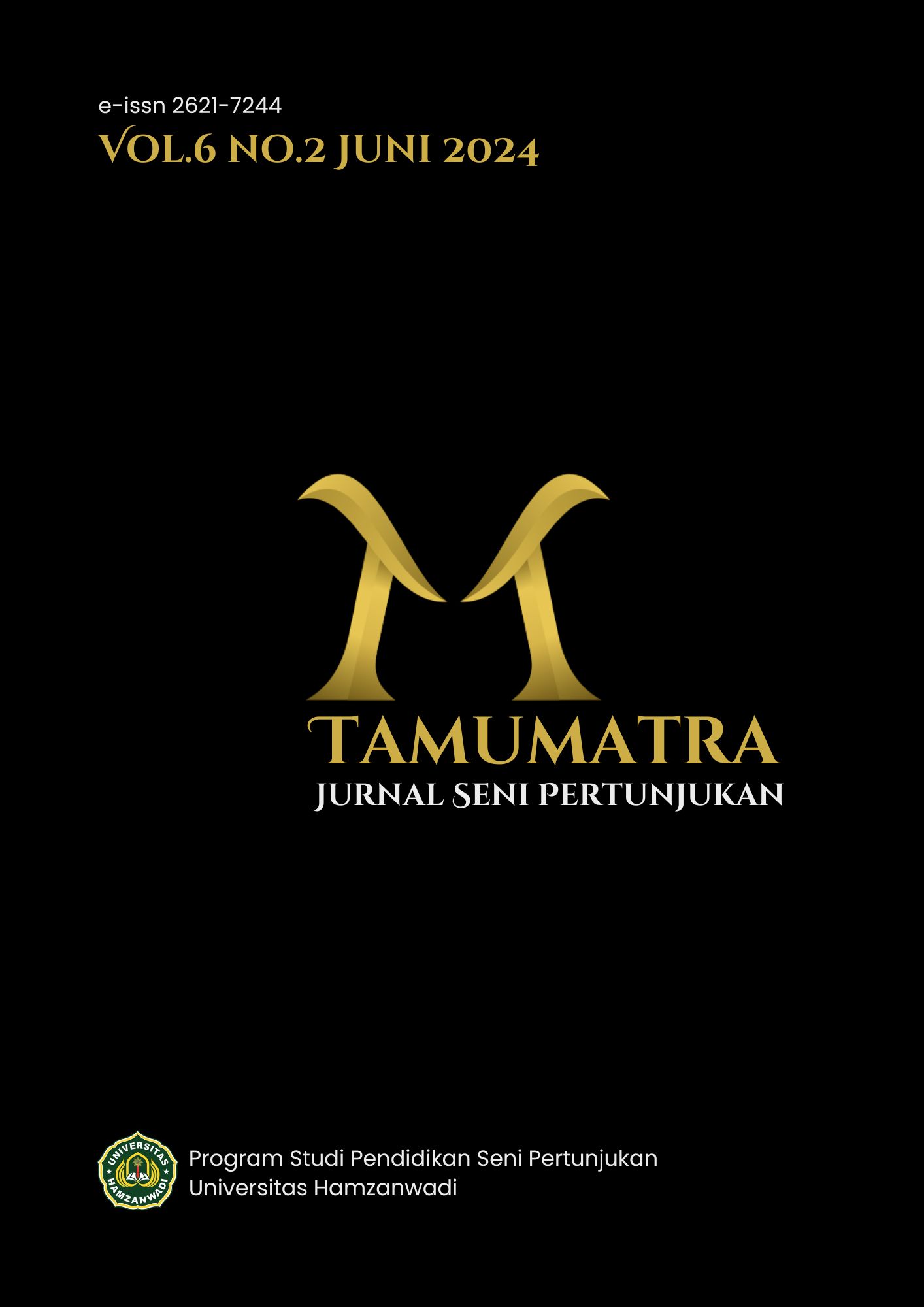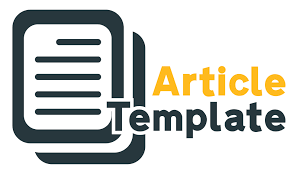Pembelajaran Kreatif Tari Jaipong Tingkat Anak Usia Dini: Tinjauan pada Sanggar Kartika Chandra Kirana Bekasi
DOI:
https://doi.org/10.29408/tmmt.v6i2.25903Keywords:
early childhood, creative teaching, Jaipong Dance, Kartika Chandra studioAbstract
The education system in Indonesia consists of three important sub-systems: formal, informal and non-formal education. The main focus in this research is non-formal education, which has become an alternative for those who wish to explore their talents and interests outside the scope of formal education. This research highlights the significant role of dance studios as a form of non-formal education that has experienced rapid development in Indonesia, especially in big cities such as Bekasi. The Kartika Chandra Kirana dance studio is a type of non-formal education that has an important role in preserving Indonesian arts and culture, especially in the context of dance. The aim of learning dance at this studio is not only focused on developing technical skills, but also on understanding and appreciating cultural values and can increase the creativity of young children. In the learning process, this studio applies various learning methods, including cooperative methods, peer tutoring, demonstrations, discussions and lectures. Students are also evaluated regularly, including through participation in the Jaipong Dance competition at Taman Mini Indonesia Indah every six months. Through these various learning and evaluation methods, students can develop their dance skills, increase self-confidence, and gain a deeper understanding of Indonesian culture. In this way, Sanggar Kartika Chandra Kirana plays a role not only as a place for dance learning, but also as a forum for preserving and developing Indonesia's cultural heritage and forming students' character holistically.
References
Abrianto, O. R., & Prihatnani, E. (2019). Metode Tutor Sebaya untuk Meningkatkan Hasil dan Motivasi Belajar Siswa Pada Materi Trigonometri Kelas XI MIPA 4 SMA Negeri 1 Ambarawa. Satya Widya, 35(1), 62–74. https://doi.org/10.24246/j.sw.2019.v35.i1.p62-74
Adisel, A., Aprilia, Z. U., Putra, R., & Prastiyo, T. (2022). Komponen-Komponen Pembelajaran dalam Kurikulum 2013 Pada Mata Pelajaran IPS. Journal of Education and Instruction (JOEAI), 5(1), 298–304. https://doi.org/10.31539/joeai.v5i1.3646
Astuti, R., & Aziz, T. (2019). Integrasi Pengembangan Kreativitas Anak Usia Dini di TK Kanisius Sorowajan Yogyakarta. Jurnal Obsesi : Jurnal Pendidikan Anak Usia Dini, 3(2), 294. https://doi.org/10.31004/obsesi.v3i2.99
Endayani, T., Rina, C., & Agustina, M. (2020). Metode Demonstrasi Untuk Meningkatkan Hasil Belajar Siswa. Al - Azkiya : Jurnal Ilmiah Pendidikan MI/SD, 5(2), 150–158. https://doi.org/10.32505/al-azkiya.v5i2.2155
Fiantika, F. R., Wasil, M., Jumiyati, S., Honesti, L., Wahyuni, S., Mouw, E., Jonata, Mashudi, I., Hasanah, N., Maharani, A., Ambarwati, K., Noflidaputri, R., Nuryami, & Waris, L. (2022). Metode Penelitian Kualitatif. Global Eksekutif Teknologi. https://www.researchgate.net/publication/359652702_Metodologi_Penelitian_Kualitatif
Hasanah, Z., & Himami, A. S. (2021). Model Pembelajaran Kooperatif dalam Menumbuhkan Keaktifan Belajar Siswa. IRSYADUNA: Jurnal Studi Kemahasiswaan, 1(1), 1–13. https://doi.org/10.54437/irsyaduna.v1i1.236
Hidayati, A. N., Damayanti, W., Afifah, H. A., & Triana, T. Y. (2023). Kreativitas Sanggar Tari Mutiara Cimahi dalam Tari Pancasari. Gaung: Jurnal Ragam Budaya Gemilang, 1(1), 49–58. https://gaung.dialeks.id/index.php/aj/article/view/7
Junaidi, J. (2019). Peran Media Pembelajaran Dalam Proses Belajar Mengajar. Diklat Review : Jurnal manajemen pendidikan dan pelatihan, 3(1), 45–56. https://doi.org/10.35446/diklatreview.v3i1.349
Pane, A., & Dasopang, M. D. (2017). Belajar dan Pembelajaran. FITRAH: Jurnal Kajian Ilmu-Ilmu Keislaman, 03(2), 227–352. https://doi.org/10.24952/fitrah
Rahmi, A., & Mayar, F. (2019). Pembelajaran Seni Tari Tradisional Minangkabau Pada Anak Usia Dini Penerus Bangsa. Jurnal Pendidikan Tambusai, 3(6), 1194–1198. https://www.jptam.org/index.php/jptam/article/view/340
Ramdani, N. G., Fauziyyah, N., Fuadah, R., Rudiyono, S., Septiyaningrum, Y. A., Salamatussa’adah, N., & Hayani, A. (2023). Definisi Dan Teori Pendekatan, Strategi, Dan Metode Pembelajaran. Indonesian Journal of Elementary Education and Teaching Innovation, 2(1), 20–31. https://doi.org/10.21927/ijeeti.2023.2(1).20-31
Rohayani, H., Agustin, A. R., & Budiman, A. (2021). Pembelajaran Tari Jaipong pada Anak Usia 7-9 Tahun. JDDES: Journal of Dance and Dances Education Studies, 1(2), 21–30. https://ejournal.upi.edu/index.php/JDDES/article/view/39908
Syaadah, R., Ary, M. H. A. A., Silitonga, N., & Rangkuty, S. F. (2023). Pendidikan Formal, Pendidikan Nonformal dan Pendidikan Informal. PEMA: Jurnal Pendidikan dan Pengabdian kepada Masyarakat, 2(2), 125–131. https://doi.org/10.56832/pema.v2i2.298
Wirabumi, R. (2020). Metode Pembelajaran Ceramah. ACIET: Annual Conference on Islamic Education and Thought, 1, 105–113. http://pkm.uika-bogor.ac.id/index.php/aciet/article/view/660#
Yulisetyowati, A. (2023). Model Pembelajaran Kooperatif Sebagai Pendorong Kreativitas Anak di Sanggar Tari Nitaswadiri Sidoarjo. Jurnal Pendidikan Sendratasik, 12(1), 151–165. https://ejournal.unesa.ac.id/index.php/jurnal-pendidikan-sendratasik/article/view/46765
Downloads
Published
Issue
Section
License
Copyright (c) 2024 Listy Pregita Aidani Nikita, Anggy Murtrias Sari

This work is licensed under a Creative Commons Attribution-ShareAlike 4.0 International License.
All writings in this journal are the full responsibility of the author. Tamumatra : Jurnal Seni Pertunjukan provides open access to benefit anyone with valuable information and findings. Tamumatra : Jurnal Seni Pertunjukan can be accessed free of charge at no cost, following the creative commons license. Authors who publish articles in the Tamumatra : Jurnal Seni Pertunjukan must comply with the following conditions:
The author retains the copyright and grants the right of first publication with the work licensed simultaneously under the Creative Commons Attribution-ShareAlike 4.0 International (CC BY-SA 4.0) license, allowing others to share the work with an acknowledgment of the work's authorship and initial publication in this journal.
Authors may make additional separate contractual arrangements for the non-exclusive distribution of the published journal version of the work (for example, posting it to an institution or publishing it in a book), acknowledging its initial publication in this journal.
Authors are permitted and encouraged to post their work online (for example, on institutional repositories or websites) before and during the submission process, resulting in a productive exchange and earlier and more extensive citations of the published work.
All articles in this journal are the sole responsibility of the author. Tamumatra : Jurnal Seni Pertunjukan provides open access to benefit anyone with valuable information and findings. Tamumatra : Jurnal Seni Pertunjukan can be accessed and downloaded for free, following the creative commons license.

Tamumatra : Jurnal Seni Pertunjukan is licensed under a Creative Commons Attribution-ShareAlike 4.0 International License







